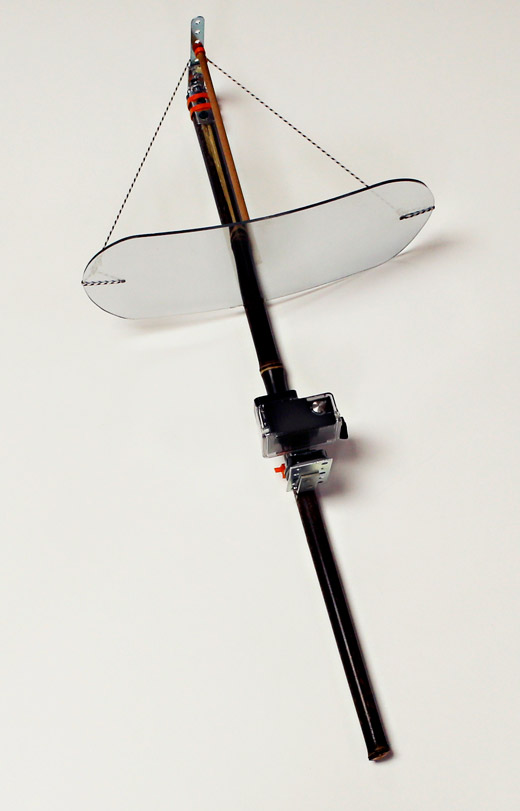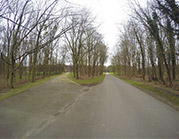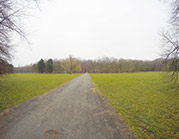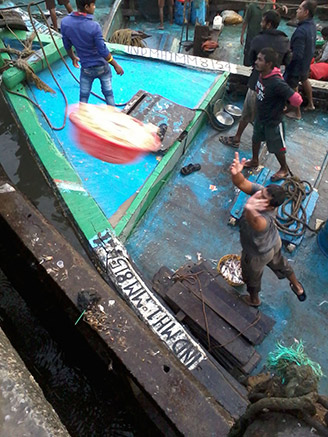Peripheral Vision
Seattle, Bombay, Paris
2016
A Specialized Area in Limbic Cortex for Fast Analysis of Peripheral Vision
“Thus, we suggest that prostriata may provide a limbic pathway by which visual information can provide relatively coarse but fast spatial information to command coordinated responses across multiple cortical systems, in situations that demand rapid action.”
– Hsin-Hao Yu, Tristan A. Chaplin, Amanda J. Davies, 2012
“I belong, however, to that species of man who is always on the edge of the thing he belongs to, who sees not only the crowd of which he forms a part, but also the great spaces all around.”
– Fernando Pessoa, The Book of Disquiet, 1930
As artist in resident at Seattle/Google, I helped frame the idea of artist residencies at the tech-giant. And I undertook my own research there: when I arrived at Google, the A/I team was developing a camera and I was offered the possibility of interacting with engineers and neuroscientists at work on that project. Having long been interested in the acts of looking and seeing, I began doing research on peripheral vision – how we use and make sense of information from the edge of our vision. Centric or foveal vision accounts for most all of what we knowingly take in as we look out. But we also register a good deal of important information, less focused and clear, from the edge of our vision. It is believed that visual data from the edges, where movement is registered, was very important to early humans as a means of detecting danger and/or tracking potential prey.
At Google I coupled GoPro cameras they provided me to mirrored devices I built. The GoPros photograph with wide-angles, but I was interested in extending their lateral reach. I brought the devices with me to address the U/W Psychology Department on my research into peripheral vision.
When I left Google to travel to Bombay, I brought the GoPros and some of the mirrored devices. I knew I would be working in the periphery of the city, and hypothesized that by necessity people living on the margins take in the environment with a “wide view.” Perhaps, I conjectured, they do so for survival as did early peoples living in the wild.
My Clark House installation (Turning Blue) also included a group of photos taken by a young man whom I met at the artist residency where I had a studio. Born in Bangladesh, Raja was a cleaner there, and lived with his mother and sisters in a plywood (blue tarp covered) shanty just outside the walls of the go-down that houses the studios. Eight-foot wide boxes, built of salvaged materials, stand side-by-side against a concrete wall and run for more than a kilometer until reaching Bombay’s old port. “Illegal” Bangladeshi immigrants call the boxes home. The adults leave each day to do the work that Indians don’t choose to perform. Raja worked in the early hours of the day at the port sorting fish, and then came to the artist residency to clean. We hit it off right away.
I gave a camera to Raja, who had never used a video camera before, with the request that he document his world, which he was excited to do. The images Raja shot were quite remarkable. He and I selected some still pictures from his videos for showing in the exhibition, where they garnered much attention.
 I left the camera with Raja and went on to Paris where I would be teaching a class to high school students in the city’s periphery. As I had done two years previously, I collaborated on the class with the superb Parisian teacher Wilfried Genetine. He agreed that providing the cameras to the young people would be involving and interesting to them. And indeed they put them to fine use.
I left the camera with Raja and went on to Paris where I would be teaching a class to high school students in the city’s periphery. As I had done two years previously, I collaborated on the class with the superb Parisian teacher Wilfried Genetine. He agreed that providing the cameras to the young people would be involving and interesting to them. And indeed they put them to fine use.
Nearby to the high school, the City of Paris had just completed a wonderfully designed mediatheque to attract new users to their library system. Built into an ex-factory building, the multimedia center buzzed with activity. I arranged for the students to show their videos and images from them in the mediatheque auditorium.
My decades of work tracking global commodities has often focused on those carrying out the labor of resource extraction, production and trade. Many of these workers migrated far from home elsewhere in the country, or crossed national borders to work at a mine, mill or plantation. In recent years, millions have been on the move, escaping repression, natural disaster, seeking work. Many, the subject of unscrupulous traffickers, have themselves become global commodities. I’m determined to broaden the pilot project I did in Bombay and Paris, because we know so little about the immigrants from their point of view. Often treated as inhuman “others” when they arrive, they live within a forced invisibility. I want us to be able to see what they see, to share in their humanity.






